No products in the cart.
Sale
Onzigolide (BIM-23A760) (CAS 778630-77-6)
Original price was: $28.00.$23.00Current price is: $23.00.
Onzigolide (BIM-23A760) is a synthetic dopamine–somatostatin chimeric peptide that combines dopaminergic and somatostatin pharmacophores to deliver potent agonism at D2R and SSTR2. It produces antiproliferative and pro-apoptotic effects in pituitary and neuroendocrine tumor models and is used to interrogate receptor cross-talk, intracellular signaling, and tumor suppression mechanisms. GMP grade, available for in-vitro and in-vivo research.
Description
Product Description
Onzigolide (BIM-23A760) is a rationally designed chimeric peptide that fuses structural elements of dopamine and somatostatin receptor ligands into a single molecule. The chimera was created to exploit receptor co-expression and functional synergy between dopamine D2 receptors (D2R) and somatostatin receptor subtype 2 (SSTR2) on certain neuroendocrine cells and pituitary adenomas. Because many pituitary adenomas co-express D2R and SSTR subtypes, a single ligand able to engage both receptor families can produce stronger and broader suppression of hormone secretion and tumor cell proliferation than separate agonists.
Originally developed as BIM-23A760 (later given the INN Onzigolide / trade names in development such as Dopastatin / TBR-760), this molecule demonstrated in multiple preclinical and early clinical studies that dual engagement of D2R and SSTR2 can yield additive or synergistic antiproliferative and pro-apoptotic responses, with downstream activation of MAPK pathways (ERK1/2, p38) and induction of caspase-dependent apoptosis in sensitive tumor types. Those properties made Onzigolide a leading candidate for investigation in non-functioning pituitary adenomas (NFPAs), GH-secreting adenomas, and other neuroendocrine tumors.
Chemically, Onzigolide is a well-characterized peptide registered in databases with the molecular formula C₈₆H₁₁₆N₁₆O₁₂S₄ and an average molecular weight around 1,694.21 Da. It contains multiple stereocenters and disulfide or sulfur-containing residues consistent with somatostatin-like moieties and dopaminergic appendages built into the scaffold. Several suppliers and chemical registries provide detailed structure data and catalog entries for research use.
Onzigolide is supplied as a lyophilized peptide (white to off-white powder) and is formulated for reconstitution in aqueous buffers for both in-vitro experiments and subcutaneous or other parenteral dosing in animal models. GMP-grade production is available for translational and preclinical programs that require documented manufacturing and batch analysis.
Product Specifications
| Parameter | Details |
|---|---|
| Product Name | Onzigolide (BIM-23A760; Dopastatin; TBR-760) |
| Synonyms | BIM-23A760; Onzigolide (INN); Dopastatin; TBR-760 |
| CAS Number | 778630-77-6 |
| Molecular Formula | C86H116N16O12S4. |
| Molecular Weight (avg) | ~1694.21 Da (database average). |
| Appearance | White to off-white lyophilized powder |
| Purity | ≥98% by HPLC (typical analytical spec for GMP lots) |
| Solubility | Soluble in water, PBS (pH 7.2–7.4), DMSO (small volumes), and standard peptide buffers |
| Stability | Lyophilized: ≥24 months at –20°C; reconstituted solutions: use promptly or store short-term at 2–8°C per SOP |
| Storage Conditions | Store lyophilized at –20°C; protect from moisture and light; avoid repeated freeze–thaw |
| Formulation | Lyophilized powder; supplied with certificate of analysis (COA). Reconstitution instructions provided. |
| GMP Compliance | Manufactured to GMP standards upon request for translational research batches |
| Applications | Receptor pharmacology (D2R, SSTR2), pituitary tumor cell biology, neuroendocrine tumor research, antiproliferative/apoptosis assays, signaling pathway studies |
| Availability | Research scale (mg–g) and custom GMP batches available upon request |
Extended specification notes (practical laboratory details, analytical testing and handling):
Analytical validation: Each lot is characterized by HPLC purity, LC-MS (confirming molecular ion and adducts), amino acid analysis, and where relevant, peptide mapping. Certificates of analysis include retention time, purity %, observed MS [M+H]+, and endotoxin results for in-vivo lots.
Salt/Counter-ion forms: Suppliers may provide specific salt forms (e.g., trifluoroacetate (TFA) salt) that slightly alter exact mass reported by catalogues; verify COA for the lot you receive.
Reconstitution tips: For cell culture, dissolve in sterile water or minimal DMSO (if needed), then dilute in serum-free medium. For animal dosing, reconstitute in sterile saline or PBS and use sterile filtration where required. pH adjustments can affect receptor pharmacology in sensitive assays—follow validated SOPs.
Handling: Use standard peptide handling precautions (gloves, low-bind tubes, prepare aliquots to avoid repeated freeze–thaw). For in-vivo research, follow institutional animal care protocols.
Regulatory / safety: For laboratory research use only. Not for human or veterinary administration. Material safety data sheets (MSDS) are provided with shipments.
Mechanism of Action & Research Applications
Overview of Dual-Receptor Strategy
Onzigolide was engineered on the hypothesis that co-activation of dopamine D2 receptors (D2R) and somatostatin receptors (primarily SSTR2) on the same cell could produce superior suppression of hormone secretion and tumor proliferation compared with single-target ligands. This chimera achieves that by combining pharmacophoric elements that retain high affinity at both receptor classes. The approach leverages receptor co-expression patterns observed in many pituitary adenomas and neuroendocrine tumors, enabling context-dependent pharmacology that engages both dopaminergic and somatostatinergic inhibitory pathways.
Receptor Pharmacology: D2R and SSTR2
Dopamine D2 receptor (D2R): D2R is a Gi/o-coupled GPCR widely expressed in pituitary lactotrophs and other neuroendocrine cells. D2R activation suppresses adenylyl cyclase activity, reduces cAMP, and modulates ion channels and MAPK signaling, yielding decreased hormone secretion and reduced cell proliferation in D2R-expressing tumors. Onzigolide’s dopaminergic moiety retains high affinity for D2R and mediates these inhibitory signals.
Somatostatin receptor 2 (SSTR2): SSTR2 is also Gi/o-coupled and strongly expressed in a subset of pituitary and neuroendocrine tumors. SSTR2 signaling suppresses GH, insulin, and other peptide hormone release, and can induce cell cycle arrest and apoptosis via ERK1/2, p38, and related pathways. The somatostatin-mimetic portion of Onzigolide engages SSTR2 with high potency.
Intracellular Signaling and Antiproliferative Effects
Preclinical studies demonstrate that Onzigolide triggers ERK1/2 and p38 MAPK phosphorylation, increases expression of cell cycle inhibitors (e.g., p27), and elevates caspase-3 activity leading to apoptosis in cultured human pituitary tumor cells and other neuroendocrine tumor models. The combined activation of D2R and SSTR2 produces a stronger antiproliferative response than either dopaminergic or somatostatin analogs used alone in several independent studies. These mechanistic observations make Onzigolide a powerful probe for dissecting cross-talk between GPCR families and downstream kinase cascades.
Research Applications (detailed)
Non-Functioning Pituitary Adenomas (NFPA):
NFPAs often express both D2R and SSTRs. Onzigolide has been used in multi-center primary culture studies showing robust inhibition of cell proliferation and induction of apoptosis in NFPA samples—making it a candidate compound for preclinical NFPA models.GH-Secreting Tumors and Acromegaly Research:
In models of GH-secreting adenomas, Onzigolide suppresses GH release more effectively than single-target analogs in some settings, allowing studies into improved control of hypersecretion and the cellular determinants of response/resistance.Neuroendocrine Tumor (NET) Biology:
NETs that co-express dopaminergic and somatostatin receptors can be tested for growth suppression, secretion profiles, and receptor desensitization dynamics using Onzigolide as a dual-agonist tool.Signal Transduction Research:
Onzigolide is used to study GPCR cross-talk, biased signaling, receptor heterodimerization hypotheses, and the interplay between inhibitory GPCRs and MAPK/caspase pathways. It helps researchers parse how simultaneous Gi/o inputs integrate to affect proliferation and survival.Combination Therapy Models:
As a research tool, Onzigolide can be combined with cytotoxic agents, targeted kinase inhibitors, or immune modulators to investigate synergistic tumor suppression and explore combinatorial regimens in preclinical models.Pharmacodynamic & PK Studies:
Preclinical pharmacology studies using Onzigolide inform receptor occupancy, dose—response relationships, and PK/PD correlations, which are essential for translational dosing strategies in future clinical programs.Biomarker Development:
Onzigolide’s ability to suppress specific secreted hormones and to modulate caspases and cell cycle proteins makes it useful in biomarker discovery programs aimed at predicting response to receptor-targeted therapy.
Model Systems & Experimental Considerations
In vitro systems: Primary cultures from human adenomas, established pituitary cell lines, NET cell lines, and engineered receptor-expressing cell lines. Endpoints include cell proliferation (BrdU, Ki-67), apoptosis (caspase assays, TUNEL), hormone secretion (ELISA), and signaling (western blot for pERK/p38).
In vivo systems: Rodent xenograft models of pituitary/NET tumors, orthotopic models for secretion and endocrine phenotyping, and PK/PD studies for dosing. Use appropriate animal welfare and biosafety protocols.
Translational Context
Onzigolide advanced into early clinical investigation given promising preclinical antiproliferative and endocrine suppression activities; clinical trials have been conducted or planned for pituitary adenomas and other indications. The translational pathway emphasizes careful patient selection based on receptor expression profiling (D2R/SSTR2 co-expression) to maximize the probability of on-target efficacy.
Side Effects (For Reference in Research Models)
Important: The following side-effect profile is compiled from preclinical studies, early human investigations, and mechanistic expectations for dopamine/somatostatin agonists. Onzigolide is for laboratory research use only and not approved for therapeutic use; clinical observations should be consulted from trial reports when designing translational experiments.
Common / Expected Pharmacodynamic Effects
Hormone modulation: As an active agonist at D2R and SSTR2, Onzigolide suppresses pituitary hormone secretion (prolactin, GH, possibly ACTH/GH depending on receptor expression). In experiments, rapid decreases in hormone output may be observed, which could influence metabolic parameters in animal models (weight, glucose homeostasis).
Gastrointestinal and CNS effects: Dopaminergic and somatostatin pathways modulate GI motility and central neurotransmission. In vivo dosing may transiently affect feeding, activity, or GI function at higher exposures—monitor animal models accordingly.
Immunogenicity & Injection-Site Reactions
Injection site irritation: Expected in subcutaneous dosing regimens (local mild erythema or inflammation).
Immunogenicity (antidrug antibodies): As a peptide, repeated administration can elicit antibody responses in animals; ADAs can neutralize activity or alter PK. Design studies to monitor for ADA formation when doing repeated dosing.
Excessive inhibition of endocrine axes: Prolonged suppression of GH/prolactin or other axes may impact growth, bone metabolism, and reproductive function in long-term animal studies.
Cardiovascular effects: Dopaminergic modulation can affect blood pressure and heart rate in some models—monitor vitals in in-vivo dosing.
Neurological effects: Central D2 activation can cause movement or behavior changes in species capable of crossing the blood-brain barrier with systemic dosing; use CNS-penetrant assays only if appropriate.
Cellular Toxicity
Apoptosis in target tissues: The desired pro-apoptotic effect in tumor cells may manifest as cell death markers in vitro; dose titration is necessary to distinguish specific antiproliferative actions from nonspecific cytotoxicity.
Species differences: Receptor expression patterns across species mean that both efficacy and side effect profiles may differ between rodents, larger mammals, and humans; cross-species validation is essential.
Mitigation Strategies for Research Use
Use minimal effective doses identified in pilot PK/PD studies.
Monitor hormone panels, body weight, clinical chemistry, and hematology in in-vivo studies.
Include ADA screening for repeat dosing.
For mechanistic cell studies, incorporate viability controls and time-course experiments to separate direct cytotoxicity from receptor-mediated apoptosis.
Disclaimer
For laboratory research use only. Not for human or veterinary use. Data summarized here are derived from preclinical literature, supplier specifications, and early translational reports — interpret carefully in the context of your experimental design. Consult the supplied Certificate of Analysis (COA) for lot-specific analytical values and consult primary literature for clinical development details.
Keywords
Onzigolide; BIM-23A760; Onzigolide CAS 778630-77-6; Dopastatin; TBR-760; Dopamine-somatostatin chimeric peptide; D2 receptor agonist; SSTR2 agonist; Pituitary adenoma research peptide; Neuroendocrine tumor research.
Additional information
| Weight | 0.8 kg |
|---|---|
| Dimensions | 56 × 23 × 56 cm |
Q1: What is Onzigolide (BIM-23A760)?
A1: Onzigolide (BIM-23A760) is a chimeric dopamine–somatostatin peptide that acts as a dual agonist at dopamine D2 receptors and somatostatin receptor subtype 2 (SSTR2).
Q2: What is the CAS number and molecular formula?
A2: CAS No. 778630-77-6. The cataloged molecular formula is C86H116N16O12S4 and average molecular weight ≈ 1694.21 Da (confirm on lot COA).
Q3: What research applications is Onzigolide used for?
A3: Onzigolide is used in pituitary adenoma research (NFPA, GH-secreting tumors), neuroendocrine tumor biology, receptor cross-talk and signaling studies (ERK/p38), apoptosis induction assays, and translational PK/PD experiments.
Q4: How should it be stored?
A4: Store lyophilized powder at –20°C, protect from moisture and light; reconstituted solutions should be used promptly or stored short-term at 2–8°C per supplier guidance.
Q5: What assays are recommended for Onzigolide profiling?
A5: Receptor binding/G-protein activation assays (D2R/SSTR2), phosphorylation of ERK1/2 and p38, caspase-3 activity, hormone secretion ELISAs (prolactin, GH), proliferation assays (MTT/WST, BrdU), and in-vivo endocrine phenotyping.
Q6: Has Onzigolide been in clinical trials?
A6: Onzigolide/BIM-23A760 advanced to early clinical investigation for pituitary indications; details on specific trials and outcomes should be obtained from clinical trial registries and recent publications for up-to-date status.
Q7: Are GMP batches available?
A7: Yes — research GMP batches and documentation (COA, batch records) are available for translational programs; contact supplier for lead times and regulatory support.
Q8: What are expected in-vivo side effects?
A8: Potential hormone suppression, injection-site reactions, immunogenicity on repeated dosing, and systemic dopaminergic/somatostatin-mediated effects (CNS, GI, cardiovascular) depending on exposure.
Q9: Can Onzigolide be combined with other therapies in preclinical models?
A9: Yes — it’s commonly studied in combination with standard of care agents or targeted inhibitors to assess additive or synergistic effects on tumor growth and endocrine control.
Q10: Where can I find analytical structure data?
A10: Database entries (PubChem, Inxight Drugs/NCATS, supplier pages) include structure, molecular formula, and mass; always verify lot COA for exact salt form and adducts.

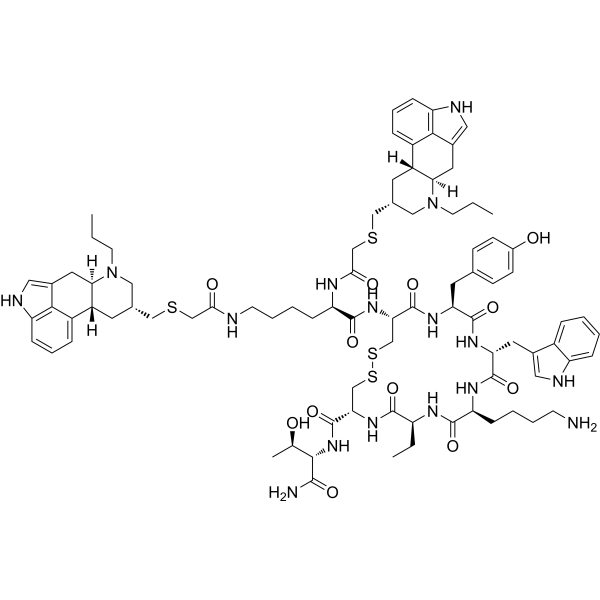
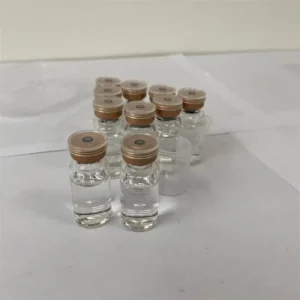
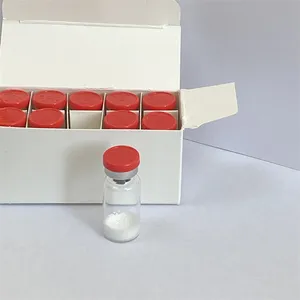
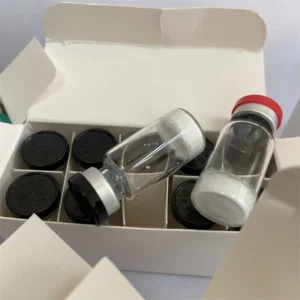
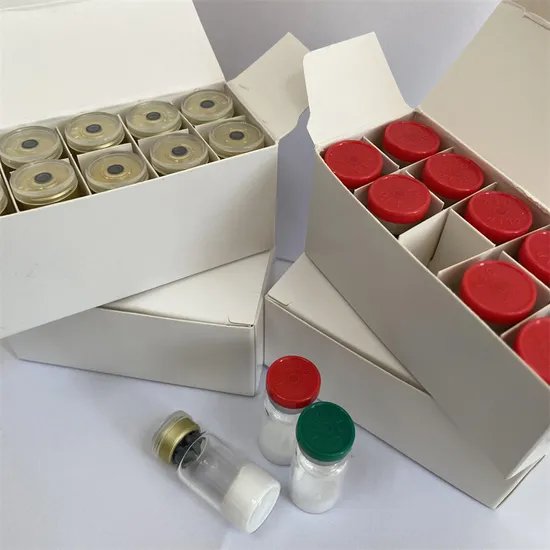
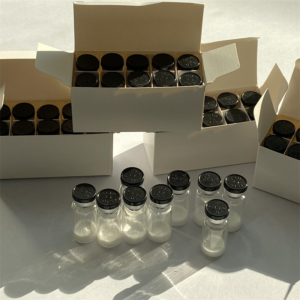
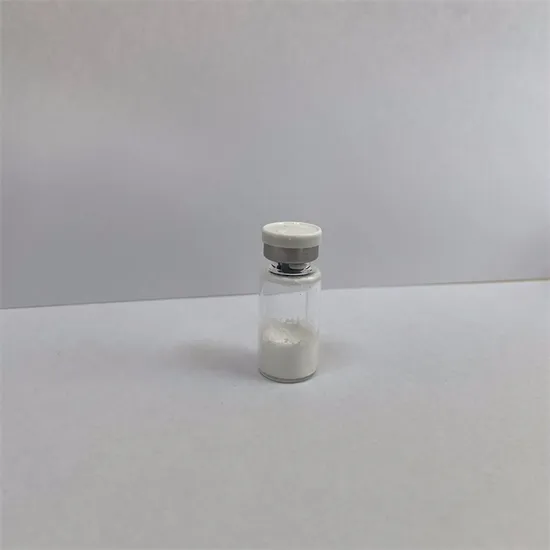
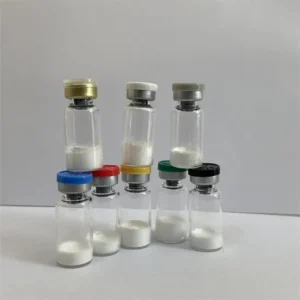

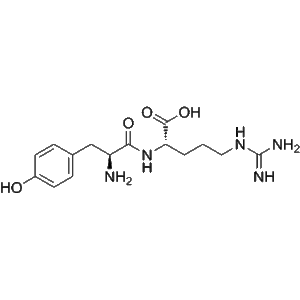
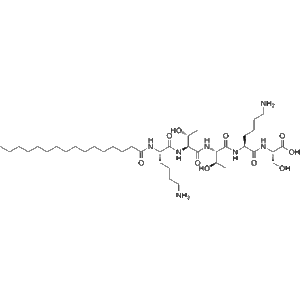
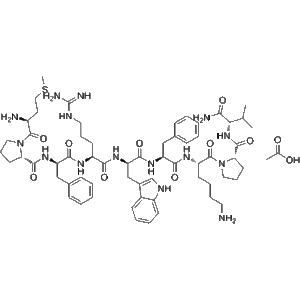
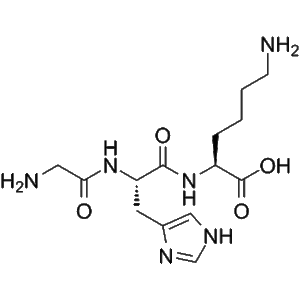
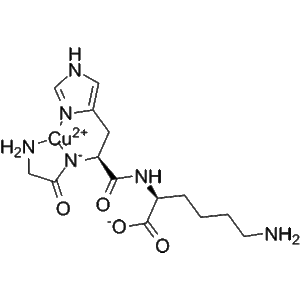
Reviews
There are no reviews yet.